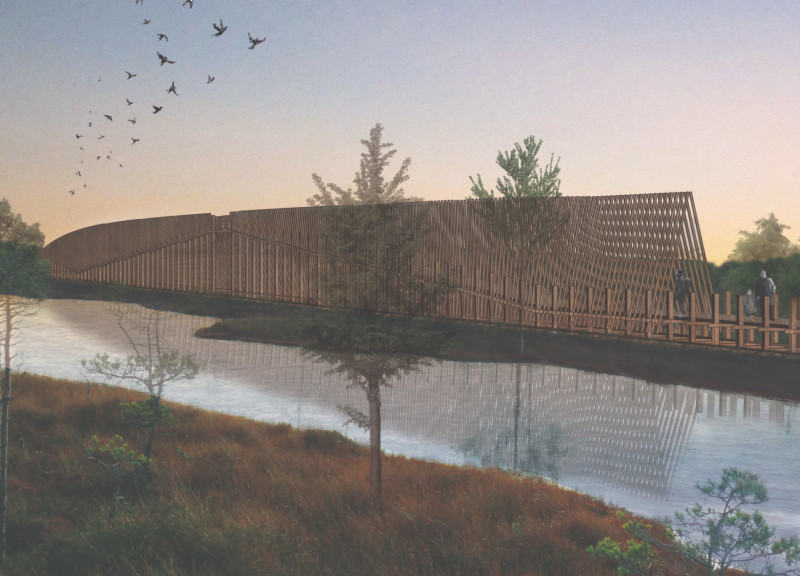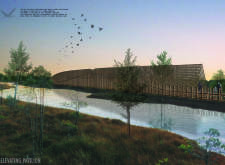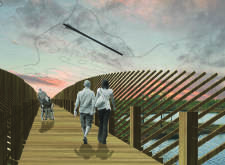5 key facts about this project
The primary function of the Elevating Pavilion is to serve as an observation point and a gathering space for visitors to engage with the surrounding landscape. Its long and undulating shape mirrors the natural movement of water, enhancing the visitor experience by creating a dynamic pathway that invites exploration. The pavilion’s elevated structure allows for unobstructed views of the wetland, enabling guests to observe wildlife without disturbing their natural habitats. This thoughtful engagement promotes environmental education and a greater appreciation for conservation efforts in the area.
One of the key design elements of the pavilion is its use of sustainably sourced timber. This choice reflects a commitment to environmentally responsible practices while providing a warm and inviting aesthetic. The structural basis of the pavilion is formed by timber beams that elevate the platform above the ground, minimizing the impact on the wetland ecosystem. Complementing the wooden structure, metal connectors enhance durability and serve a functional role while providing a contrast that emphasizes the natural materials used in the project.
The pavilion's design embodies a unique approach to architecture, characterized by its fluid geometric form that resembles the wings of a bird in flight. This organic shape fosters a sense of movement and adaptability, allowing the structure to blend seamlessly into its natural surroundings. The strategic use of vertical wood slats on the façade creates a visually engaging screen, casting dynamic shadows that change with the sun's position, thus offering an evolving experience for visitors. This design not only serves an aesthetic purpose but also promotes ventilation while maintaining an intimate connection with the outdoors.
Another important aspect of the project is its environmental responsiveness. The pavilion is elevated to allow for the free flow of water beneath it, thereby promoting the ecological health of the wetland. This intentional design choice ensures minimal disruption to the local flora and fauna, making the pavilion not just a human-centric space but also a supportive habitat for various species. The project embodies a holistic approach to architecture that prioritizes sustainability and ecological integrity, reflecting a growing trend in modern design to harmonize built environments with their natural contexts.
Unique design approaches in the Elevating Pavilion include its emphasis on user experience and interaction with nature. The structure encourages movement and exploration through its meandering path, drawing visitors through the space while inviting them to pause and observe. This interaction fosters a deeper appreciation for the wetland environment, transforming the pavilion into more than just a physical structure; it becomes a medium for educational engagement and environmental stewardship.
Overall, the Elevating Pavilion stands as a testament to contemporary architectural practices that prioritize sustainability and experiential design. Its thoughtful integration with the landscape and the sensitivity to ecological considerations exemplify how architecture can respond to and celebrate its environment. To gain a deeper understanding of the architectural plans, architectural sections, and overall architectural designs that define this innovative project, readers are encouraged to explore the project presentation for more details. By delving into the architectural ideas behind the Elevating Pavilion, one can appreciate the myriad ways in which this project enriches both its surroundings and the experiences of those who visit it.


























